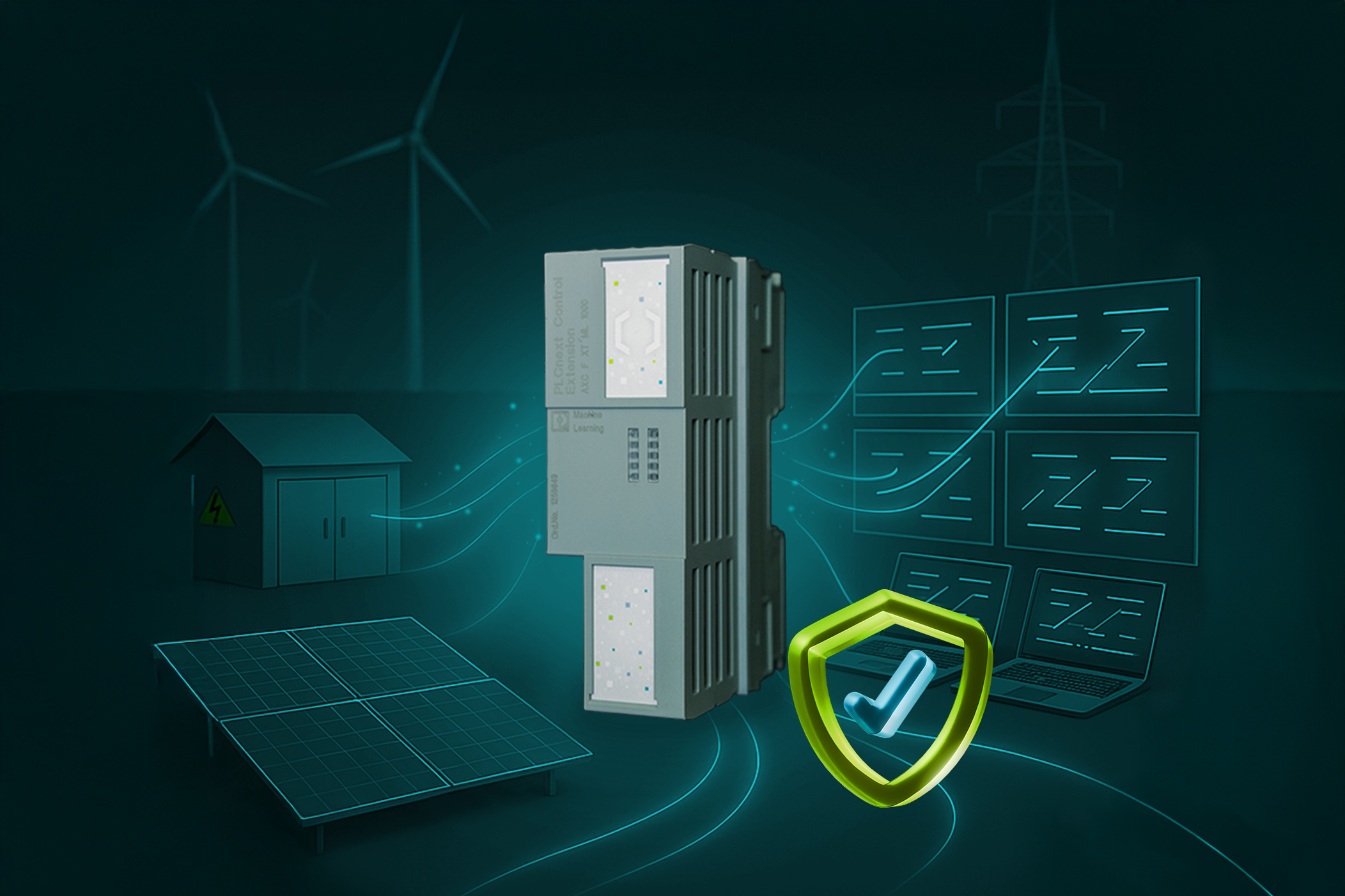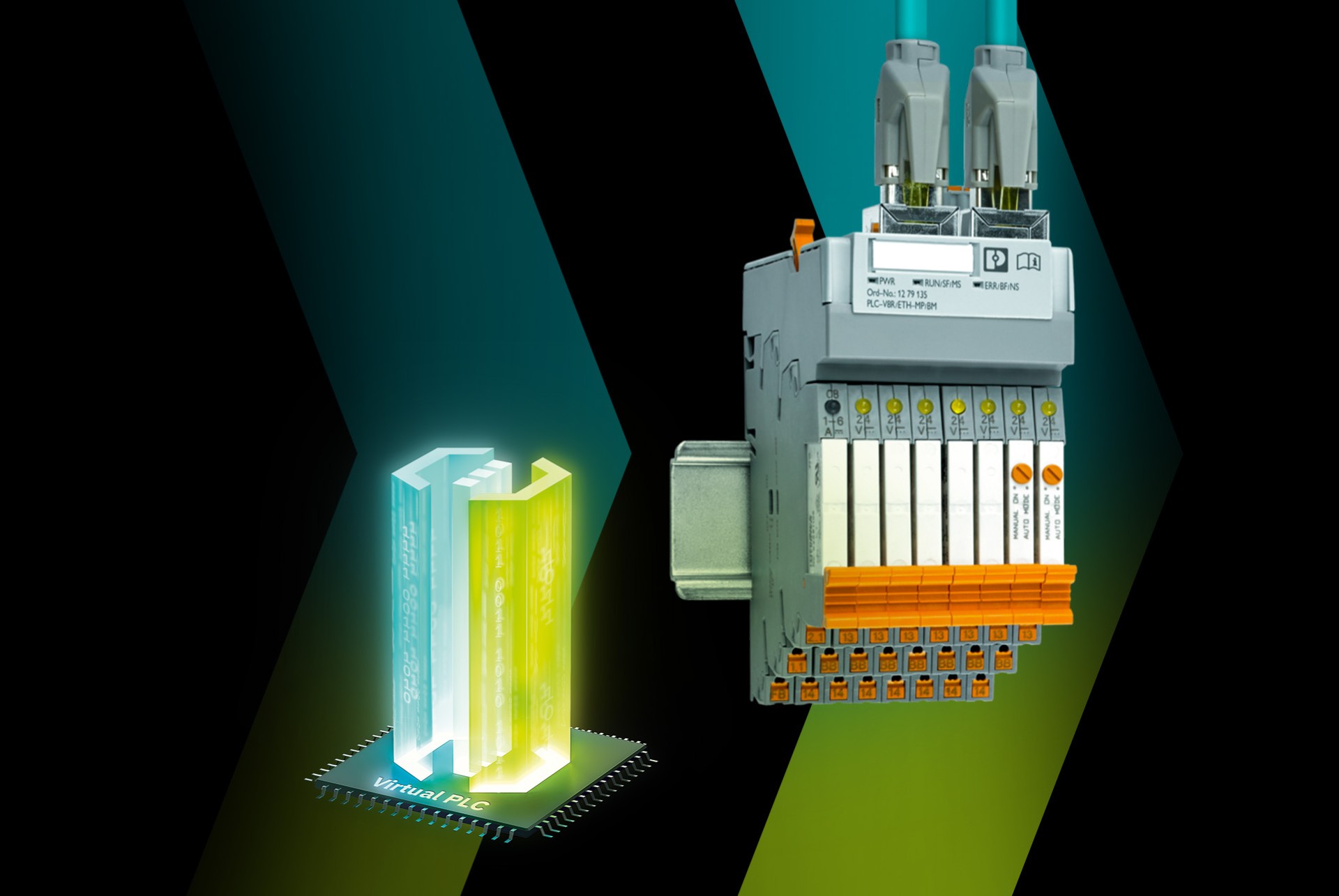
For decades, industrial control systems have been tightly coupled to hardware. The PLC was a physical device—rack-mounted, cabinet-bound, and often isolated from the broader IT infrastructure. But as industrial automation increasingly intersects with cloud computing, edge intelligence, and containerized deployment models, the question arises: what if the PLC could be virtualized?
With the introduction of Virtual PLCnext Control, that question is no longer hypothetical. Phoenix Contact has released a fully software-based version of its PLCnext Control runtime, designed to run as an OCI-compliant container on standard x86 hardware. This means that control logic, once confined to dedicated hardware, can now be deployed as a container on industrial PCs, edge servers, or even in virtual machines within a data center.
Real Control, Now as Software: Capabilities and Architecture
At its core, Virtual PLCnext Control is not a simulation or a stripped-down runtime. It is a complete, IEC 61131-3-compliant control system with real-time capabilities and deterministic behavior. It supports the same programming environments and high-level language integrations as its hardware-based counterpart, including C++, C#, and Python. The runtime is built on the same open, Linux-based architecture that underpins the PLCnext Technology ecosystem, ensuring compatibility with existing tools and workflows.
What makes this development particularly relevant for developers and IT professionals is its alignment with modern deployment practices. The controller is packaged as an OCI-container, allowing it to be orchestrated using standard DevOps tools. This opens the door to scalable, repeatable deployments across distributed systems—whether at the edge, in a private data center, or in a hybrid cloud environment.
Architectural Flexibility and Seamless Integration
From a systems architecture perspective, this shift enables a new level of flexibility. Control logic can be decoupled from physical locations, allowing for centralized management, rapid scaling, and simplified maintenance. Updates can be rolled out using familiar IT mechanisms, reducing downtime and eliminating the need for on-site firmware flashing. For organizations managing fleets of machines or distributed assets, this translates into real operational advantages.
The virtual controller also supports industrial communication protocols such as PROFINET, OPC UA, and Modbus TCP/IP, making it suitable for integration into existing automation networks. It can interface with I/O modules, fieldbus systems, and higher-level IT platforms, bridging the gap between operational technology and enterprise systems.
Deployment Scenarios
- Edge Computing
Run control logic directly on edge devices to reduce latency and enable real-time decision-making. Ideal for applications like predictive maintenance, protocol conversion, and local data preprocessing. - Data Centers
Deploy virtual PLCs on high-performance servers to centralize control logic for distributed systems. This is particularly useful for managing large-scale automation environments or digital twins. - Device Manufacturers
Integrate Virtual PLCnext Control into existing industrial hardware (e.g., panel PCs) to reduce system complexity and eliminate the need for separate PLC hardware.
The flexibility of Virtual PLCnext Control opens up a new range of deployment options. Here are a few but there is always room for your ideas:
Of course, virtualization introduces its own challenges—particularly around real-time performance and cybersecurity. The containerized architecture addresses these concerns by isolating control instances and supporting secure update mechanisms. Performance tuning remains essential, especially when deploying on shared infrastructure, but the system is designed to support deterministic execution within defined resource constraints.
For those already working with containerized applications, the learning curve is minimal. And for automation engineers new to virtualization, the PLCnext Technology ecosystem provides a familiar programming environment with the added benefits of modern IT integration.
Virtual PLCnext Control represents more than just a new product—it signals a shift in how control systems are designed, deployed, and maintained. It invites developers to think beyond the cabinet and consider control logic as a software service—scalable, portable, and infrastructure-agnostic.
If you’re building automation systems that need to scale, adapt, or integrate with IT infrastructure, this is a development worth exploring. The PLC is no longer just a device. It’s a deployment.




